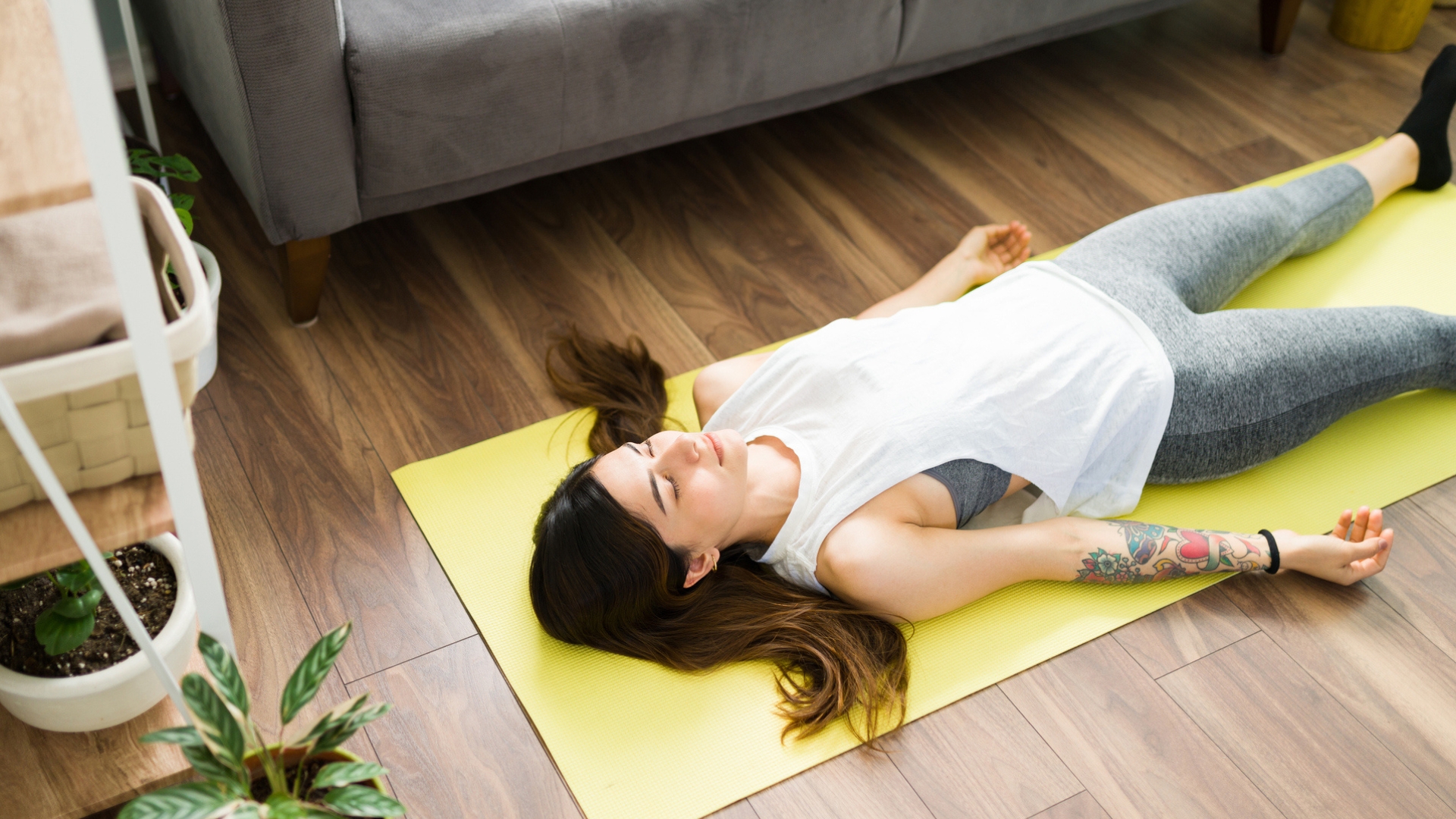
You’ve likely heard of yoga and meditation, but what about yoga nidra? This ancient practice is renowned for its ability to help with stress, anxiety and sleep problems. As someone who occasionally struggles with all three, I decided to try it for 10 days.
Yoga nidra translates from Sanskrit as ‘yogic sleep'. It's meant to induce deep relaxation through guided instructions for breath awareness, body scanning and visualization. It's typically practiced lying down on your back in corpse pose (relaxation pose), placing you in a state between wakefulness and sleep.
Research backs its benefits, too. A study published in the International Journal of Yoga found that yoga nidra decreases activity in the sympathetic nervous system (the nerves responsible for your fight-or-flight response) and enhances relaxation.
How to practice yoga nidra
If you don’t have time for a long session or want to ease yourself in gently, this 10-minute practice is a great place to start. No equipment is needed but you might want to wrap up in a cozy blanket to enhance relaxation as body temperature drops when you are still.
Steps to get started:
- Find a comfortable place to lie down. The best position is relaxation pose with arms to the sides of the body, palms facing up and legs apart.
- Close your eyes and ensure your body feels at ease; make any adjustments you need before settling into the practice.
- Follow the instructor's voice as she guides you through breath awareness and a body scan. Don't worry if you drift off.
During the session you’ll be prompted to notice things like the temperature of the room, the feeling of clothing against your skin and the pressure of your body against the surface you’re lying on.
When you’re ready for a longer session, I enjoyed this 20-minute practice.
I'd also recommend you have something soft and supportive underneath you; all the mats below feature in our round-up of the best yoga mats and have been tried and tested by our team. You can use them for yoga nidra or other sessions, like this beginner yin yoga routine.
Shop yoga mats
How I felt after practicing yoga nidra for 10 days
It was easier to relax and fall asleep
Before trying yoga nidra, I often lay awake for hours, tossing, turning and overthinking, which used to leave me dreading bedtime. However, practicing yoga nidra before bed helped me drift off more easily—even to the point where I occasionally didn’t finish the practice. Focusing on my mind, surroundings and the guided voice, calmed my racing thoughts and reduced nighttime anxiety.
I felt more mindful of my actions
Surprisingly the benefits of yoga nidra extended into my daily life. I became more aware of how I rushed through tasks, often making silly mistakes (like putting my glasses in the fridge!). This newfound mindfulness helped me slow down, stay present and approach tasks more intentionally.
I became more comfortable with discomfort
Yoga nidra also taught me how to observe discomfort without judgement. Whether it was a physical ache or intrusive thoughts, I learned to watch the sensations rather than judge them. This shift has been a subtle but transformative change in how I handle stress.







